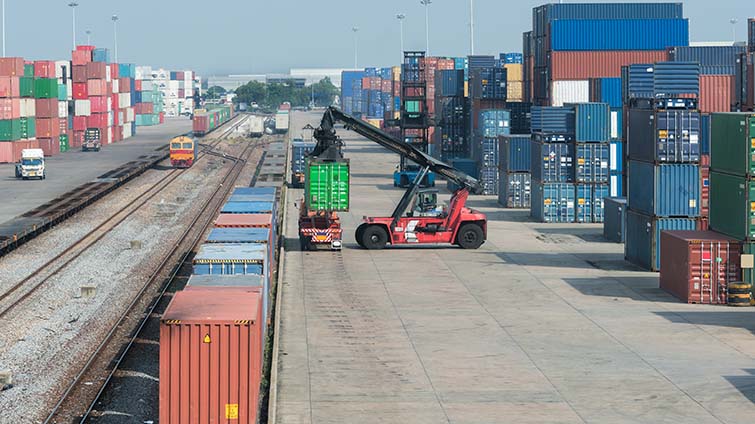West Coast intermodal stable amid tariff trade shifts

Tariff trade winds
Historically, the West Coast is the demand engine for the U.S. intermodal market. A large portion of that is driven by port activity, specifically the ports of Los Angeles and Long Beach. As noted in the June Freight Market Update, West Coast ports experienced a significant drop in volume in May after U.S. tariffs on imports from China and other countries were announced in early April. But when the tariffs were temporarily lowered, pent-up freight from China was expected to increase volumes in June.
As expected, data for the week of June 22 shows that container ship arrivals were up 73% year-over-year. For the week of June 29, arrivals were up more than 10% year-over-year—not as significant as the prior week. This was likely the initial burst of orders that many were expecting to come from China.
Intermodal volumes from Southern California are up, but it didn’t turn out to be the tsunami of freight some were expecting. A few customers told us they either cancelled or dramatically cut back plans to import. Numerous factors were at play, but the main one was a lack of inventory already produced and ready to ship.
Many customers have indicated that the preliminary details of a U.S.-China trade deal made in May will allow them to import on their normal timeline. If this is true, we are likely to see a muted but more normal peak season out of the West Coast starting in late August.
Pre-emptive cost-saving opportunities
Spot pricing out of the West Coast is expected to increase more slowly leading into the historical peak season of August through November. Any shipper that can avoid unplanned shipping in those months can avoid surge pricing. If there is no choice, those that line up projects and volumes early will see the best rates. Unless importers ship consistently year-round from the area already, it’s likely they’ll be paying surge rates.
The best way to secure capacity at the cheapest price is to be flexible with ship dates and try to ship early in the week. Generally, most rail carriers bring in empty container trains over the weekends, when the rail ramps are less busy with customer freight.
For inbound freight to Southern California, the next few months should see some smaller reductions in the spot market with very little concern for capacity constraints. Other intermodal shipments not touching the West Coast should see normal seasonal patterns, with produce in Texas and Georgia leading to a slight increase in demand in those states.
Committed pricing prospects
Committed pricing continues to be very regional. Outbound from the West Coast, some lanes have seen double-digit rate increases over the past couple of months. Other regions continue to see the 2-5% average y/y increase that has persisted for most of the year.